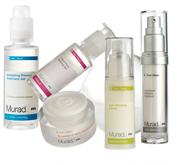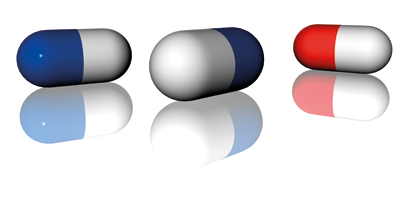The cosmetics industry provides a real opportunity for pharmaceutical companies to expand their offering, says Aran Puri
Pharmaceutical companies have enjoyed phenomenal success and profits over the last two decades. However, they are now feeling the effects of the current economic climate and are therefore on the lookout for opportunities to increase their turnover profits and margins. One of their key problems is a lack of new blockbuster drugs in the pipeline.
This is also exacerbated by the fact that the patents of many best selling and revenue generating drugs are expiring, resulting in a lowering of prices and increased competition from similar generic drugs. Another serious threat is the exponential global expansion of Indian pharmaceutical companies. There are also unresolved issues with Indian and other companies that produce and distribute with impunity cheap copies of patent protected drugs, such as those for HIV. For these reasons, they are on the constant lookout for opportunities for expansion and diversification.
One area pharmaceutical companies are currently focusing on is the biotech industry for innovation and new drugs. However, the other area that is certain to have caught their attention is the personal care and cosmetics industry which despite the recession is enjoying growth and expansion. One of the reasons for this is constant innovation and excellent marketing in the cosmetics industry, especially in the area of skin care. The advent and outstanding success of a stream of new generation anti-ageing creams and serums over the last ten years has surprised many and defied all expectations. This fast growth area has made an enormous impact on the ever evolving cosmetic market in terms of turnover, profits and margins.
It is very significant that the price point of skin care products has risen dramatically in the last decade especially in the face and under-eye care area. Premium and popular brands are able to command prices that were beyond the imagination of marketers only a few years ago. An average retail brand anti-wrinkle cream now costs between £10 and £25 whereas premium brands can cost £200 and more. This has had a dramatic impact on profit margins.
Results 2011: Cosmetics Multinationals
Procter & Gamble
2011 sales: $82.6 up 5%
Beauty and grooming sector: $28.2bn up 3%
L’Oréal
2011 sales: €20.3bn up 4.3%
Profits: €3.2bn up 7.7%
Margin: 16.2 %
Luxury sector gave best results up 8.2%
Unilever
2011 personal care: €15.5bn up 8.2%
Skin care: double digit growth (operating margin of 18%)
Estée Lauder
2011 sales: $8.8bn up 13%
Net earnings: up 38%
Skin care: up 15%
La Mer premium skin care brand showed strong growth
Avon
2011 sales: $11.3bn up 4%
Johnson & Johnson consumer products & personal care sector
2011 sales: $14.9bn up 2%
Results 2011: Pharma Multinationals
Pfizer
2011 sales: $67.4bn up 1%
Biopharmaceuticals: down 6%
Consumer healthcare: up 8%
Net income: up 21%
GSK
2011 sales: £27.4bn down 3.5%
Pharmaceuticals: up 2%
Consumer healthcare: up 5%
AstraZeneca
2011 sales: $33.6bn down 2%
Loss of $2bn from generic competition
Novartis
2011 sales: $58.6bn up 16%
Operating income: down 5%
Sanofi – Aventis
2011 sales: €33.4bn up 5.3%
Net income: down 4.6%
Johnson & Johnson
2011 sales: $65.0bn up 5.6%
Comparison of results
Let’s look at the turnover and profits 2011 results of leading cosmetics multinationals.
A comparison of the 2011 turnover and profits of leading cosmetics companies with those of the pharmaceutical giants makes interesting reading.
It has not gone unnoticed by the pharmaceutical industry that pickings within the cosmetics sector are easy and rich compared to their own industry. The president of a pharmaceutical company who chose not to be named commented: “For sure there is an increase in interest in the cosmetics industry by the pharmaceutical companies.”
The attraction is that whereas enormous investment and risk has to be taken by pharmaceutical companies in developing and gaining regulatory approval for the sale and marketing of a new pharmaceutical, the cosmetics industry can develop and launch new products much quicker, at a lower cost and hence less risk, with a comparatively modest investment. Arguably the life cycles of successful products are much shorter in the cosmetics industry but this is countered by launching new products more frequently, a marketing strategy favoured by the industry. One imaginative approach pharmaceutical companies are already starting to take is to modify the application and register cosmetics as medical devices where the registration and regulatory requirements are not as stringent as in the pharmaceutical area.
A success story
One key question that immediately springs to mind is why multinational cosmetics companies are doing so well. In addition, how does their business model and style differ from that of the pharmaceutical companies? And why don’t the cosmetics divisions of pharmaceutical companies do as well as multinational cosmetics companies?
The answer has to be that the business style and mindset of pharmaceutical companies is very different to that of the cosmetics companies. The rigid rules within which the product development and marketing strategies of the pharmaceutical companies operate do not work well in the cosmetic industry. Having worked for a multinational pharmaceutical company with a cosmetics division I can confirm from personal experience that this is true. One associate of mine with considerable experience in this area claims it is because “everything in the pharmaceutical industry has rigid edges whereas everything in the cosmetics industry has fluid edges”. Another factor is that multinationals shuffle senior managers around between various divisions. This propagates their culture and business style across the company. Although this works well within the confines of the pharmaceutical area it does not work for cosmetics where different experience, expertise, flexibility and flair are paramount.
Johnson & Johnson is a good example of a pharmaceutical company that has made the successful transition between the pharmaceutical sector and the cosmetics sector. The reason is that its consumer healthcare division which includes the cosmetic sector is run as a standalone business with its own unique management and marketing style.
The same is also true, in reverse, in the case of L’Oréal Groupe, which has a very successful pharmaceutical division: Galderma. The reason for its success is that it also is operated as a standalone business.
Dermatology & aesthetics
Over the last few years, dermatologists’ own name doctor skin care brands have been gaining strength in the market as respected premium brands and are showing good growth potential. Brands such as Murad, Perricone MD and Dr. Brandt are now well established and generating good turnover. Sephora has given these emerging lesser known brands good uplift and opportunity by marketing them through its stores.

Dr brands such as Murad have been gaining strength in the market as respected premium brands
One new entrant to this market is Rodan & Fields. Owned by two dermatologists, Drs Katie Rodan and Kathy Fields, it is showing all signs of becoming a very significant brand in the direct sales market. This brand was sold to Estée Lauder in 2003 who later sold it back to the original owners in 2007. L’Oréal has also picked up on this trend by naming Dr Gervaise Gerstner as its own brand dermatologist. The success of this niche sector and its huge marketing potential is bound to have caught the eye of the large pharmaceutical companies.
Recent adverse publicity about beauty products within the pharmaceutical industry has not helped build public confidence. Issues with silicone implants and the subsequent increased government regulations are bound to be of concern to the pharmaceutical industry. Any adverse publicity from a sector however remote cannot be good for the industry and its credibility as a whole. But it may also create another diversification opportunity for the big, trusted pharmaceutical brands – to take over selling such products. This is something that would be welcomed by both professionals and the public.
Anti-wrinkle injection treatments in the aesthetic beauty care industry is another area where opportunities exist. Quasi medical treatments such as Botox or fillers like collagen and hyaluronic acid have done very well over the years and generated very handsome profits for this niche area of the market. A leading company in this area is Allergan which recorded a turnover of $5bn and 10.9% increase in sales in 2011. Its Botox and dermal fillers recorded an impressive growth of 12% and 27.8% respectively.
There is scope and considerable potential demand for these treatments if the underlying public unease about the associated risks of these invasive procedures can be managed. With increased public acceptance and turnover, enhancement opportunities will increase especially if they are marketed using the support and resources of the big pharmaceutical brands.
However, this sector of pharmaceutical industry has not been immune from its share of adverse publicity. Last year a man in the US who suffered brain damage when injected with Botox to treat cramps and tremors in his hand was awarded $212m. More recently, fear headlines such as the one that appeared in The Times on 3 January 2012 (‘Cosmetic injections: the “next disaster”’) are bound to cause concern in the pharmaceutical industry and affect its investment strategy in the beauty sector. But new innovations such as the introduction of LaViv, a new competitor to Botox which involves reinjecting the body’s own Fibroblast cells after growing them in a culture medium, are poised to give a huge impetus to this market.
The cosmetics industry’s image and safety record is on the whole comparatively good. Any problems are well managed, short lived and well contained by the industry and as a result do not result in large payouts. Recent reports relating to an episode involving an alleged allergy to a L’Oréal hair dye provide a fine example of how the industry is able to contain isolated problems when they crop up.
Partnership through research
I personally advocate the development of closer links and partnerships between the cosmetics and pharmaceutical industries. Both sectors and the public at large will benefit from the synergy it brings. The latest developments in the advanced skin care sector including the application of actives such as retinol, vitamins and peptides have catalysed the emergence of a new generation of highly efficacious skin care cosmetics. We cannot overlook the fact that the cosmetics industry owes their emergence to the pharmaceutical industry whose research yielded these actives. While many of these actives may not have been efficacious enough for pharmaceutical applications, they can find application in the cosmetics industry where efficacy requirements are not as stringent. One interesting development is the recent links announced in March last year between AstraZeneca and L’Oréal to mutually exploit actives originating from AstraZeneca research.
Another interesting area for the pharmaceutical industry has been opened up by the advances in stem cell technology with medical applications that include dermatology. The use of human stem cells in skin care is certain to come under the spotlight of the pharmaceutical sector, as cosmetics regulations do not permit the use of products harvested from human sources in cosmetics. Therefore any significant advances in this field will need to be exploited via the pharmaceutical sector with links to the cosmetics sector. This and other new discoveries could create new opportunities and result in a new category of pharma-cosmetics which could be regulated and accepted by everyone as genuine new generation cosmeceuticals.





